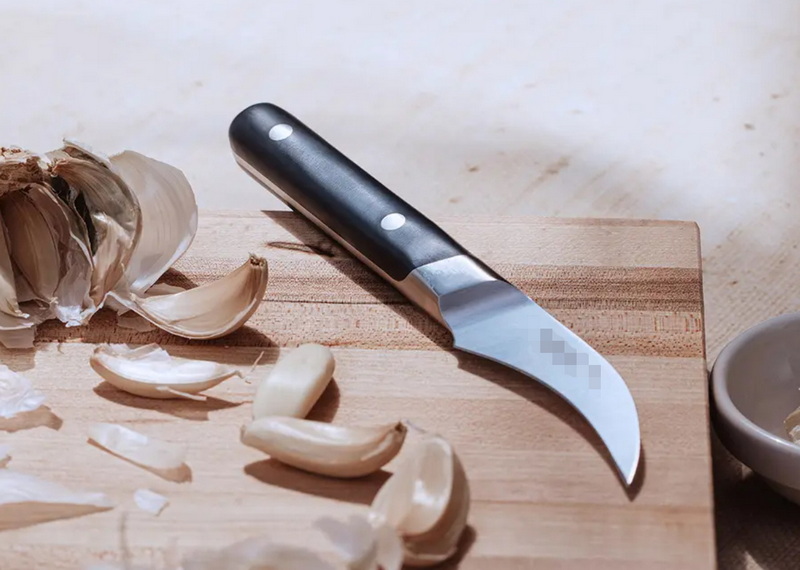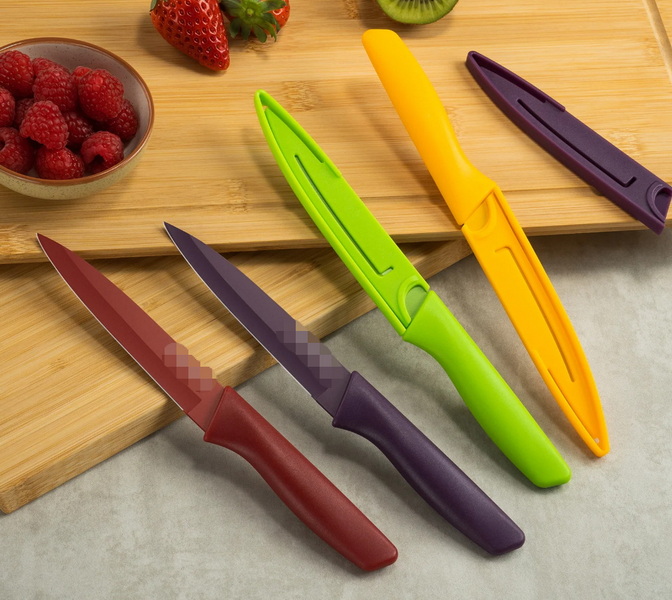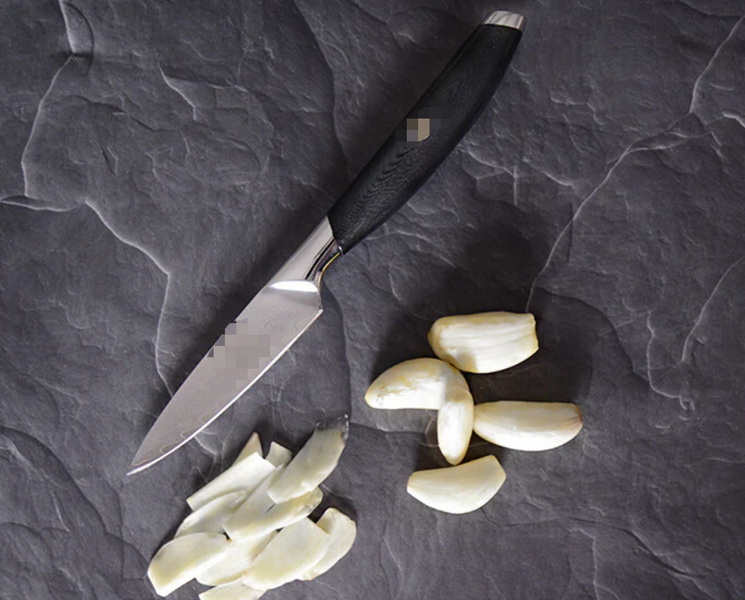- All
- Product Name
- Product Keyword
- Product Model
- Product Summary
- Product Description
- Multi Field Search
Views: 222 Author: Ann Publish Time: 2025-10-24 Origin: Site











Content Menu
● Section: Elevated Performance Factors
● Section: Comprehensive Applications
● Section: Materials and Construction Deep Dive
● Section: Ergonomics to Drive Efficiency
● Section: Maintenance and Care Best Practices
● Section: OEM and Market Readiness
● Section: Visual Media Strategy
● Section: Practical Techniques for Paring Knife Use
● Section: Common Pitfalls and Mitigation
● Section: Market Adaptation and Brand Storytelling
● Section: Word Count and Translation Considerations
● Section: FAQs (Consolidated)
>> 1) What is the ideal blade length for a paring knife?
>> 2) How often should I sharpen a paring knife?
>> 3) Can a paring knife be dishwasher safe?
>> 4) What grip is best for precise paring work?
>> 5) How do I prevent rust on a stainless paring knife?
A paring knife is a precision tool designed for detail work such as peeling, trimming, de-seeding, and intricate garnish preparation. The right paring knife can streamline tasks that would otherwise slow down prep work, reduce waste, and improve overall kitchen workflow. This extended version dives deeper into how quality paring knives influence efficiency, the materials and construction that maximize performance, ergonomic design features, maintenance practices, and strategic considerations for OEM collaborations with international clients. We explore how durable blades, balanced geometry, and reliable edge retention translate into real-world time savings, labor reduction, and improved output quality.

- Material quality: High-carbon stainless steel or SG2/D2 variants offer edge retention, corrosion resistance, and ease of sharpening. Powder metallurgy steels can provide superior wear resistance for high-volume professional kitchens.
- Blade geometry: A balanced, narrow, and pointed blade enables precise cuts with minimal force, reducing fatigue during extended prep sessions.
- Tang and handle design: Full tang construction and ergonomic handles reduce fatigue and enhance control during repetitive tasks like peeling hundreds of small fruits or trimming delicate garnishes.
- Balance and weight: Proper balance improves control, reduces wrist strain, and speeds up intricate tasks such as micro-découpage and decorative cuts.
- Edge preparation: Bevel angle consistency and sharpening regimen ensure reliable performance over time in busy kitchens or high-output OEM production lines.
- Durability under kitchen conditions: Resistance to acid-based foods, frequent washing, and thermal cycling prevents micro-damages that slow tasks.
- Peeling and trimming produce: Sharp, slender blades enable precise peeling of citrus zest, potato eyes, and fruit contours with minimal waste.
- Deveining and seed removal: A sharp, slender profile navigates tight spaces, minimizing damage to delicate flesh.
- Garnish work: Fine paring knives enable delicate shaping for carrot curls, citrus twist garnishes, and herb ribbons that elevate dish presentation.
- Meat and fish prep: Small-scale trimming and filleting tasks benefit from steady, controllable cuts that preserve the integrity of the product.
- Pastry and fruit work: Intricate cuts for decorative fruit garnishes and pastry decorations, such as lattice patterns or marbling templates.
- Plant-based prep: Delicate leaf removal, vein trimming, and herb chiffonade are efficient with the right blade geometry.
- Blade steel options:
- High-carbon stainless steels for edge retention and corrosion resistance in heavy-use environments.
- Stainless variants for cost-effective OEM lines with acceptable performance.
- Powder metallurgy steels for superior wear resistance in demanding kitchen environments.
- Blade geometry: Typical lengths range from 2.5 to 3.5 inches, with slender profiles and a fine point for precision tasks.
- Handle materials: Polypropylene, POM, G10, pakkawood, or laminated wood, chosen for grip, moisture resistance, and durability. Consideration of antimicrobial finishes can be valuable for commercial settings.
- Tang and bolster: Full tang provides structural strength, while an ergonomic bolster supports balance and user comfort.
- Surface finishing: Micro-serrated edges or precision-ground flat bevels can be selected based on intended use and customer preferences.
- Corrosion resistance: Coatings or stainless grades that resist citrus and chlorides common in kitchen cleaning regimes extend blade life.
- Handle contouring: Finger grooves, rounded transitions, and palm-supported grips improve grip security and control during repetitive tasks.
- Weight distribution: A well-balanced knife reduces fatigue and increases precision in long prep sessions.
- Guard and spine design: Comfortable spine width and lightweight guard minimize fatigue while maintaining safety.
- Maintenance-friendly design: Dishwasher-safe options require robust joinery and corrosion-resistant metals without compromising edge quality.

- Cleaning: Hand washing is often recommended to prolong edge life and prevent corrosion, with thorough drying after washing.
- Sharpening: Regular honing preserves micro-bevel integrity; periodic sharpening restores edge geometry.
- Storage: Protective sheaths or knife blocks protect edges and prevent dulling.
- Cleaning frequency: In high-use environments, schedule mid-shift wipe-downs and end-of-shift inspections to maintain performance.
- Habit formation: Training staff to handle paring knives safely and maintain consistent angles improves overall efficiency.
- Customization options: Blade steel, edge geometry, blade length, tang style, handle material, engraving, packaging, and branding options to suit various regional preferences.
- Compliance and labeling: Ensure packaging meets regional food-safety standards, labeling requirements, and language localization.
- Packaging and marketing: Design packaging that communicates intended use, maintenance instructions, and safety tips in multiple languages.
- Quality control: Implement hardness testing, edge retention measurements, corrosion resistance tests, and bend/twist checks for tangs.
- After-sales support: Provide maintenance guidance, spare parts, and replacement blades to support long-term customer satisfaction in global markets.
To maximize reader engagement and demonstrate practical usage, integrate:
- High-resolution images showing precision tasks such as peeling, trimming, and decorative cuts across kitchen contexts.
- Step-by-step photo sequences illustrating blade control, angle, and pressure during typical paring tasks.
- Short videos (30–90 seconds) demonstrating efficient paring knife technique, edge maintenance, and safe handling in professional kitchens.
- Infographics comparing blade angles, handle ergonomics, and maintenance steps for quick reference.
- A media gallery with before/after images of tasks to illustrate efficiency improvements and value for OEM partners.
- Grip: Pinch grip with the thumb and forefinger near the blade for sensitive control, while the other fingers wrap around the handle.
- Cutting angle: Maintain a shallow angle that allows controlled, tiny motions suitable for peeling and trimming.
- Rhythm: Develop a steady tempo to reduce fatigue; short, precise strokes beat long, sweeping motions for intricate work.
- Blade visibility: Keep the blade clean and visible to ensure accurate tracking on curved surfaces.
- Safety: Always curl the guiding hand away from the blade path and use a stable cutting surface.
- Dull blades slow work and raise the risk of slips. Regular honing and scheduled sharpening are essential.
- Overreliance on force with small blades reduces precision. Practice micro-movements and rely on edge sharpness.
- Inconsistent handle feel and balance can cause fatigue. Prioritize ergonomic, balanced designs with consistent finishes.
- Market-specific messaging: Emphasize precision, safety, and edge longevity in regions with high-end culinary cultures; highlight cost efficiency and reliability in price-sensitive markets.
- Private label branding: Offer engraving, packaging customization, and color-coded handles to support retailer differentiation.
- Education and training: Provide usage guides, maintenance worksheets, and video tutorials to build consumer confidence and reduce damage due to improper use.
- Sustainability: Promote eco-friendly handle materials and recyclable packaging to appeal to environmentally conscious buyers.
- Case studies: Include real-world examples from pilot OEM programs showing time saved per prep session with high-quality paring knives.
- The article integrates multiple mentions of Paring Knife to reinforce SEO and brand positioning across international markets.
- Emphasis on readability with varied sentence structures and practical, actionable guidance suitable for both professional and home cooks.
- If needed, this content can be translated into target languages with culinary terminology preserved, using professional localization to maintain nuance in different markets.
A high-quality paring knife is a foundational tool that can dramatically improve kitchen efficiency through precise control, superior edge retention, and ergonomic design. For OEM partnerships, aligning blade steel selection, geometry, handle ergonomics, and packaging with target markets ensures your brand delivers reliable performance, safety, and lasting value. By integrating well-chosen materials, thoughtful ergonomics, rigorous maintenance, and robust media support, manufacturers can elevate Paring Knife offerings to meet the demands of international brands and professional kitchens alike. The result is faster prep, reduced waste, and consistently impressive culinary outcomes.

A typical length ranges from 2.5 to 3.5 inches, chosen for balance between control and reach for small tasks and precise work.
Honing should be done regularly to maintain edge geometry, with periodic sharpening based on use frequency and steel type.
Some models are dishwasher safe, but hand washing is generally recommended to prolong edge life and corrosion resistance.
A pinch grip with the index finger extended along the blade provides excellent control for delicate cuts.
Rinse and dry promptly after use, store in a dry environment, and avoid prolonged exposure to acidic foods on unprotected steel.
The Ultimate Professional Knives for Halal Butchery in Middle Eastern Kitchens
Chef Knife Size Guide: Choosing Between 6″, 8″, 10″, And 12″
Custom Knife Handles: How To Design A Chef Knife That Fits Your Hand Perfectly
Chef Knife Surface Treatments Guide: From Polished Migaki To Damascus Patterns
Inside Our Professional Knife Sample Room: Quality You Can See
Universal Knife Block Buying Guide: Modern Acrylic & ABS Knife Holders for Professional Kitchens
Universal Knife Block: The Complete Guide To Modern, Hygienic Knife Storage
The Complete Guide To Red Handle Knife Sets: Style Meets Functionality in The Kitchen
Professional Knives for Halal Butchery And Middle Eastern Cuisine